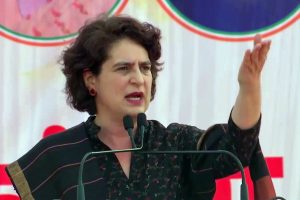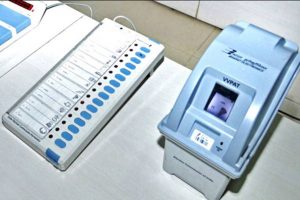Conspicuous by its absence in the veritable torrent of election dialogue in India ~ even in the often erroneous statistics on a variety of subjects ~ is what should have been a prime concern, that India is ranked 120 among 122 countries in the water quality index, with 75 per cent of its households lacking access to drinking water at the point of residence.
Water Aid’s Beneath the Surface: The State of the World’s Water 2019 report, launched on World Water Day last month, which underscored this, only reinforced the prognostications of India’s own Niti Aayog about zero-water day that will begin with the Indian capital.
The point that nearly 600 million Indians face high to extreme water stress and about 200,000 people perish annually thanks to inadequate access to safe water is curiously not an issue of import; certainly not for the candidates and, regrettably, neither for the water-starved; the electorate happier being pickled in the mandir-masjid brine.
Yet, 21 cities, including Delhi, Bengaluru, Chennai and Hyderabad, will run out of groundwater by 2020, affecting 100 million people, a Niti Aayog study said a year before, with 40 per cent of the population or more than 500 million people with “no access to drinking water” by 2030; just a decade down the line.
A business- as-usual scenario will mean a six per cent loss in the country’s gross domestic product by 2050. An interesting aspect of the problem is that high income households consume 250 litres per head, per day, going up to a high of 600 litres, while low-income households manage on as little as 40 litres. The other aspect is that there is no way to address the issue without addressing the urban-affluent selfishness and a host of other development, environment and economic challenges that, for instance, impact water channels.
Delhi’s Najafgarh drain epitomizes the problem; the more than 50- kilometer stretch flows through west Delhi and disgorges into the Yamuna, refuge and all. The damage is estimated at 60 per cent of the pollution that pours into the river.
There are projects galore, most not in sync with felt needs nor with feasible solutions such as large-scale operations to recharge aquifers, a proven way forward, amongst others. Yet there are massive operations to tap ground water through borewells for supplies to dry neighbourhoods, the solution making for a bigger crisis.
Truth to tell, the monsoons generally deliver more water than India’s consolidated needs, though neither the time-span nor distribution are optimal. Indeed, given that climate change is upon the world, studies predict that India will get more rain on an average in the future with regions getting submerged, as Kerala was, thanks to the fast-melting Himalayan snow and the glacial waters making their way through clogged urban channels.
Eventually, it boils down to water management and being water smart, which may well deserve more attention than proving one’s space capabilities.











